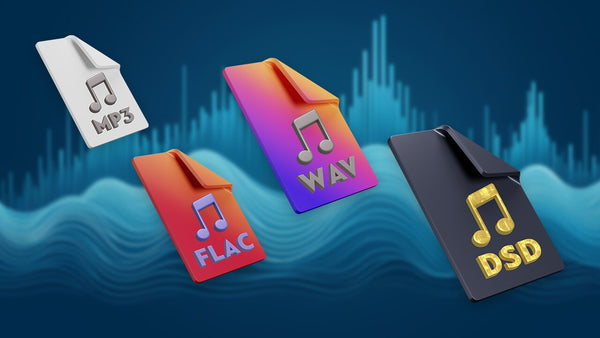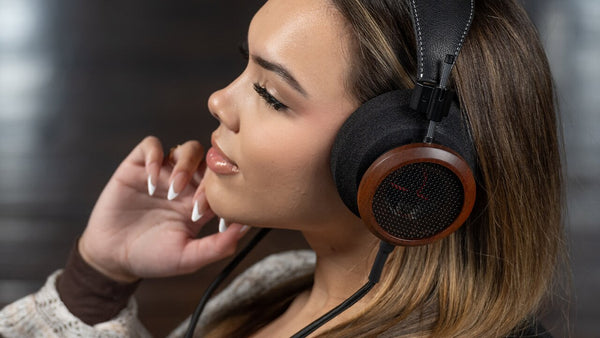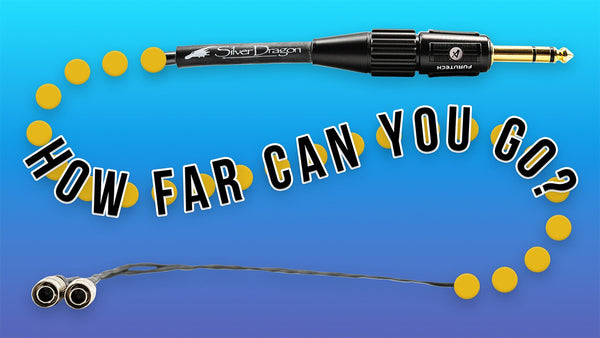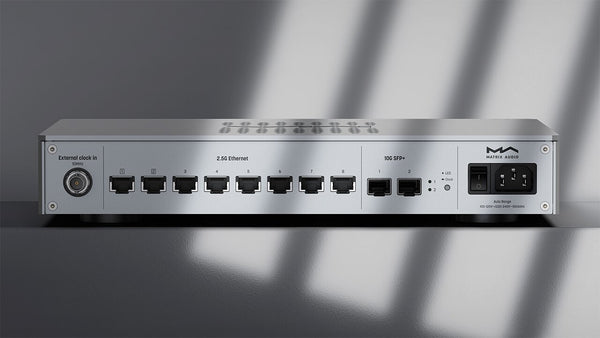Is Soundstage Tied to Frequency Response? Soundstage in Headphones Explained

Summary: Soundstage enhances the immersive listening experience by simulating a 3D audio environment. While frequency response influences soundstage, factors like headphone design, driver type, and structure play more significant roles. Open-back headphones generally provide a wider soundstage, ideal for audiophiles seeking realism across music genres and media.
Main Points:
- Soundstage Defined: Creates a 3D acoustic experience, improving immersion in music, games, and media.
- Factors Affecting Soundstage: Driver type, headphone design (open-back vs. closed-back), geometry of the ear cup and headphone cup, and placement on the ear.
- Frequency Response: Impacts soundstage but isn’t the primary determinant.
- Recommended Headphones: Wide soundstage options vary by price and use case, from entry-level to studio-quality models.
Soundstage is a crucial part of the overall listening experience. When the driver within your headphones or IEMs can evoke the positions of different sounds, like instruments and vocals, it creates a more realistic and engaging listening experience.
That sort of immersive experience is exactly what many discerning audiophiles are looking for. A bigger soundstage is generally better, as it more accurately simulates the original recording of the audio.
That explanation only scratches the surface of soundstage as a concept, however. There are plenty of particulars to consider when finding the right soundstage for you and key questions to answer, such as “Is soundstage tied to frequency response?”
Keep reading to learn more about the role of soundstage when enjoying audio on headphones. We’ll take a closer look at what soundstage is, how it affects the listening experience, and the factors that influence soundstage. Then, we’ll highlight some of our favorite headphones from a soundstage perspective.
Understanding Soundstage in Headphones and its Influence on the Listening Experience
So, what is soundstage in headphones? What makes it so important for your listening experience, no matter what genre of music or other type of audio you’re listening to? Let’s explore.
What is Soundstage in Headphones?
In general, soundstage is the ability of speakers or headphones to deliver a three-dimensional acoustic experience, as Home Studio Basics explains.
Poor or low-quality soundstage can make you feel as if the sound is all coming from within a single place or is within your own head. Conversely, good soundstage more accurately simulates the positioning of musicians, instruments, and singers. That creates a richer and more authentic listening experience.
The following point is obvious to most people in general, let alone audiophiles. However, it’s also a crucial factor in understanding soundstage in headphones: Headphones sit right next to your ear or, in the case of IEMs, within your ear.
That means headphones can’t take advantage of positioning and open physical space within a room to project sound waves as speakers can. Instead, the type of headphone drivers, their positioning, the style of headphone (i.e., open back vs. closed back), and other factors create the soundstage in these devices.
It’s by no means impossible to deliver good or even exceptional soundstage with headphones and IEMs. There are plenty of headphones with great soundstage, which we highlight in the last section of this blog.
However, good soundstage in headphones is by no means a guarantee. Just think of the times you’ve listened to music or other audio with inexpensive or stock headphones or earbuds — you probably didn’t feel as if you were in the same room as the artists. Instead, the audio likely felt flat and condensed.
How Soundstage Affects Listening Experience
Effective soundstage in headphones delivers a more immersive listening experience. You don’t just hear the sounds themselves. Instead, you hear where each sound is located in a virtual performance space, whether it’s the studio, stage, or a live environment. This is imaging: the perceived location of sounds.
It’s important to note that good soundstage benefits nearly every type of audio. Whether it’s pop music, rock, classical, or almost any other genre, soundstage in headphones makes you feel closer to the singers and musicians.
Strong soundstage also puts you into the performance when listening to movies, TV shows, recorded plays and musicals, and similar media. Soundstage in headphones is often vital for video games as well. It gets you closer to the action while also improving performance by helping you accurately locate the source of sounds that signal danger and opportunity.
No matter what you’re listening to, the concept of soundstage always comes back to that perceived three-dimensional environment. It’s especially important in critical listening, whether as an engineer analyzing a track or as an audiophile adjusting levels while considering how a reference track sounds on a new piece of equipment.
While a lot goes into developing a good soundstage in headphones, from your own perceptions to the technical specifications of your audio gear, the idea itself is simple. Strong soundstage immerses you in the audio, reducing the conceptual distance between you and the experience.
Factors In Audio Equipment Influencing Headphone Soundstage
From the headphone drivers to the basic style of headphones, either open back or closed back, the specifics of your cans have an incredible influence on the soundstage you experience.
We don’t want to discount the importance of the recording process itself in creating soundstage, but that’s not a factor that audiophiles can easily adjust after the fact. Similarly, our own perceptions of sound, variations in hearing, and personal preferences impact soundstage. These factors are far easier to accommodate than to change.
With that in mind, what are the key factors in headphones that contribute to soundstage?
Headphone Driver Technology and its Role in Soundstage
Drivers in headphones accomplish two vital tasks in the listening experience. They convert electrical signals into sound and drive that sound to your ears (hence their name). Drivers are essentially miniature speakers.
There are several types of headphone drivers. Each one accomplishes the same basic goal of creating sound waves through different means, which influences the listening experience in general and soundstage specifically.
Each type offers benefits that align with certain audio genres and listening preferences beyond soundstage as well. Read our blog on headphone driver types for a complete review of how headphone drivers influence the listening experience. For now, let’s focus on a few driver types recognized for offering advantages in terms of headphone soundstage.
Planar magnetic headphones use magnets to move a flat plane to create sound. They’re known for offering low distortion along with excellent detail and overall sound clarity, as well as above-average or better soundstage.
Ribbon drivers are more common in speakers but are also found in headphones. While ribbon driver headphones are fragile and difficult to transport, they also produce unmatched clarity and sensitivity in sound, along with a notably expansive soundstage.
Dynamic drivers are the most commonly used headphone drivers. Dynamic driver headphones use a coil connected to a diaphragm within a magnetic field to produce sound. High-quality dynamic driver headphones have a good overall soundstage. The Sennheiser HD800s is a great example of a dynamic driver headphone that has one of the best overall soundstages of audiophile-grade headphones at under $2000.
Headphone Design and Structure
The structure and design of headphones also contribute to the soundstage and each listener’s overall perception of the audio they hear.
Perhaps the starkest differences come from two major styles of over-ear headphone construction: open-back and closed-back headphones. The difference is simple, although the effects on soundstage can be profound.
Open-back headphones have openings that allow air and sound to move out of the back of the headphone cups. This structure leads to a wider soundstage, which is often preferable for audiophiles. However, the open design also allows exterior sound to leak in, making them less effective in noisy, crowded, or otherwise shared environments.
Closed-back headphones are the opposite, lacking the ventilation that allows soundwaves and air to exit. The result is a more concentrated sound and smaller soundstage. However, these headphones also effectively isolate noise, and high-end closed-back headphones can still deliver good soundstage.
Driver placement, as well as the size of the drivers, also contribute to soundstage perception in headphones. The location of the driver, specifically angled toward the ear canal, can help to replicate the natural experience of listening to live sound and improve soundstage. Larger drivers, meanwhile, can help to create a wider soundstage through a larger surface area.
The geometry of the headphone cup itself also plays a key role in soundstage by shaping the listening environment around the ear, as does the physical placement of the headphone on a listener’s head. Suffice to say, there is an incredibly broad range of factors that influence soundstage.
Tuning and Frequency Response
Is Soundstage Tied to Frequency Response?
Frequency response is used to describe the range of frequencies that headphones can reproduce as well as the quality and accuracy of that reproduction. It’s commonly measured in hertz (HZ), as Major HiFi explains, and covers the range from the lowest base (10 HZ) to the highest treble (20,000 HZ).
Flat frequency response, meaning the headphones reproduce each frequency range (from the bass to the mids to the treble) equally and is considered ideal in many but certainly not all situations. Headphones can also boost certain frequency ranges, such as increasing bass, which can be exactly what an audiophile desires when listening to funk or hip-hop.
So, does frequency response influence soundstage? How closely are the two tied together?
Our view is that frequency influences soundstage. Frequency response can be adjusted by manufacturers and audiophiles to alter and improve soundstage, but other factors play larger roles. Remember, the immersive listening experience and the ability to mentally locate sound in an audio source does not come down to a single factor. Instead, many considerations are in play.
The placement of the headphones on the head, as well as the headphone cup, have much more influence on soundstage. So do the angle and orientation of the drivers within the cups. Frequency response is important to consider as part of the overall listening experience, but it’s not the most crucial element of soundstage.
The Best Soundstage Headphones: Our Expert Picks
Now that you know more about soundstage in headphones, you’re probably interested in finding headphones with great soundstage. Here are some of our recommendations, taking multiple price ranges and audio genres into account.
Entry-Level (Under $1,000): Meze Audio 109 Pro
The Meze Audio 109 Pro offers an incredibly wide soundstage and high energy, creating an organic sound. The dynamic drivers offer both warmth and clarity, while the open-back design supports longer listening sessions along with exceptional soundstage. At $799, they offer excellent value and are particularly effective for rock, jazz, blues, and alternative music.
Mid-Tier ($1,000 to $3,000): Dan Clark Audio E3 Closed Back Planar Magnetic Headphones
The Dan Clark Audio E3 Closed Back Planar Magnetic Headphones offer a sense of airiness and openness that rivals high-quality open-back headphones. Immerse yourself in the amazing soundstage while enjoying all the noise-cancelling benefits of closed-back headphones.
These cans are exceptional for folk, blues, and country vocals. Pair them with a DAP audio player to efficiently power the planar magnetic drivers.
Reference Listening (Over $3,000): Audeze LCD-5 Headphones
The Audeze LCD-5 Headphones deliver incredible soundstage and imaging along with in-depth detail and nuance. These open-back headphones stand out for listening to complex music of just about any genre, and especially classical and jazz, delivering clear individual sounds. The planar magnetic drivers offer clean, tight bass along with a distortion-free listening experience.
Daily Drivers: Meze Audio 99 Classics Headphones
High fidelity and a close (but not too close) soundstage make the Meze Audio 99 Classics a great entry-level headphone, especially for rock and metal. Most of the team at Moon Audio use these as our daily in-office headphones because they deliver audiophile-grade sound at an attractive price, and that’s just about the strongest endorsement we can give any pair of cans.
Mixing and Mastering in the Studio: Audeze LCX-X & LCD-XC Headphones
Perfect for Pop, Hip-Hop, R&B: Sennheiser HD 660s2 Headphones
Warm, energetic, and dynamic sound is found in the Sennheiser HD 660s2 Headphones. Their intimate soundstage connects you equally well with the emotive vocals, beating guitars, and driving bass that exemplify so many pop, hip-hop, and R&B tracks. Expect an effective and pleasing balance of crisp bass, excellent mid-frequency response, and natural treble.
Find the Perfect Headphones for You at Moon Audio
Soundstage in headphones is incredibly important for any kind of listening. Remember that soundstage is influenced by both the design, structure, and components of your headphones as well as natural differences in hearing and personal audio preferences, so don’t only limit yourself to our recommendations! Check out the specs and find the cans that work best for you.
Elevate your listening experience with our premium headphone collection. Shop now and discover the quality you've been looking for.






